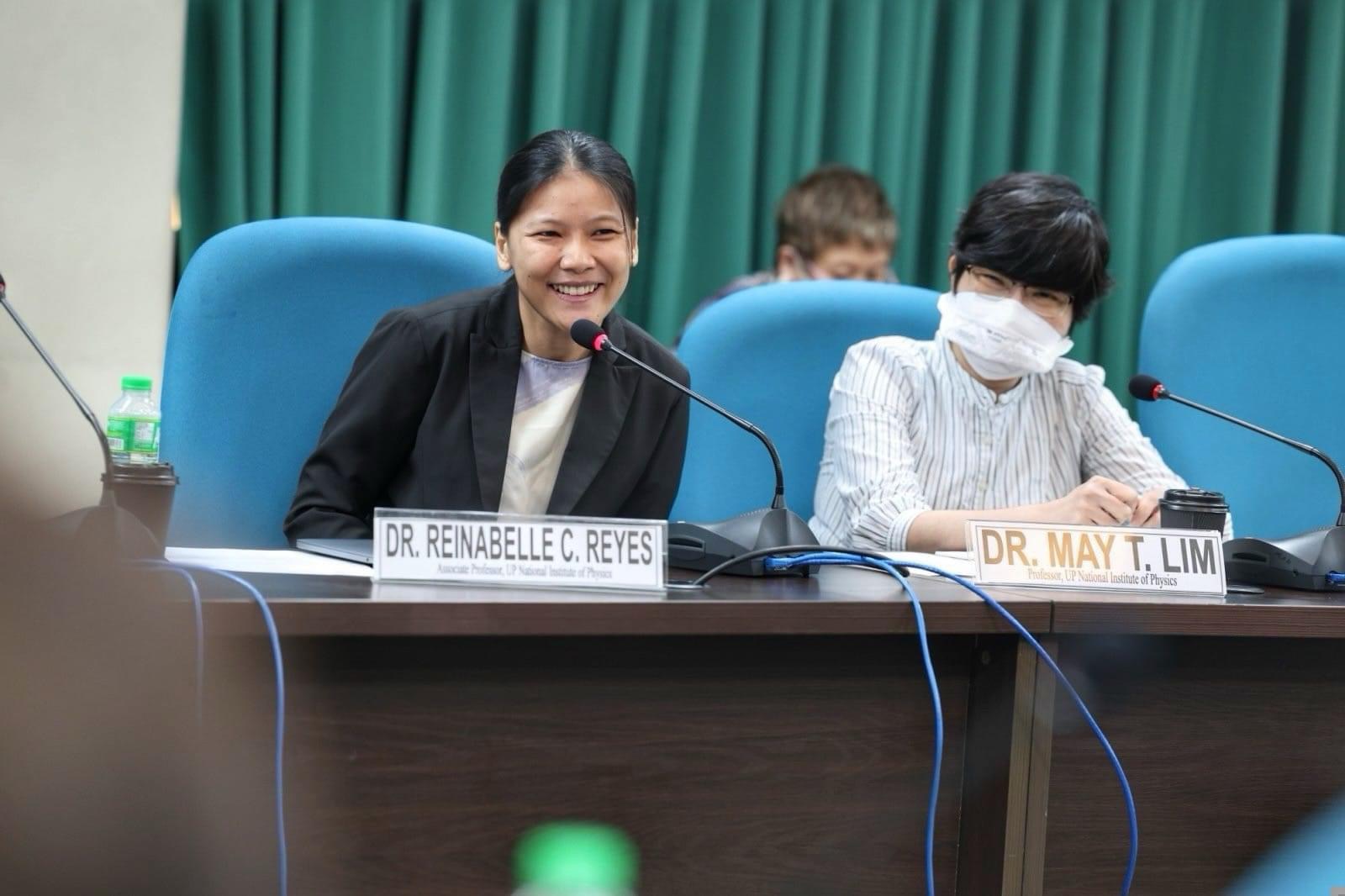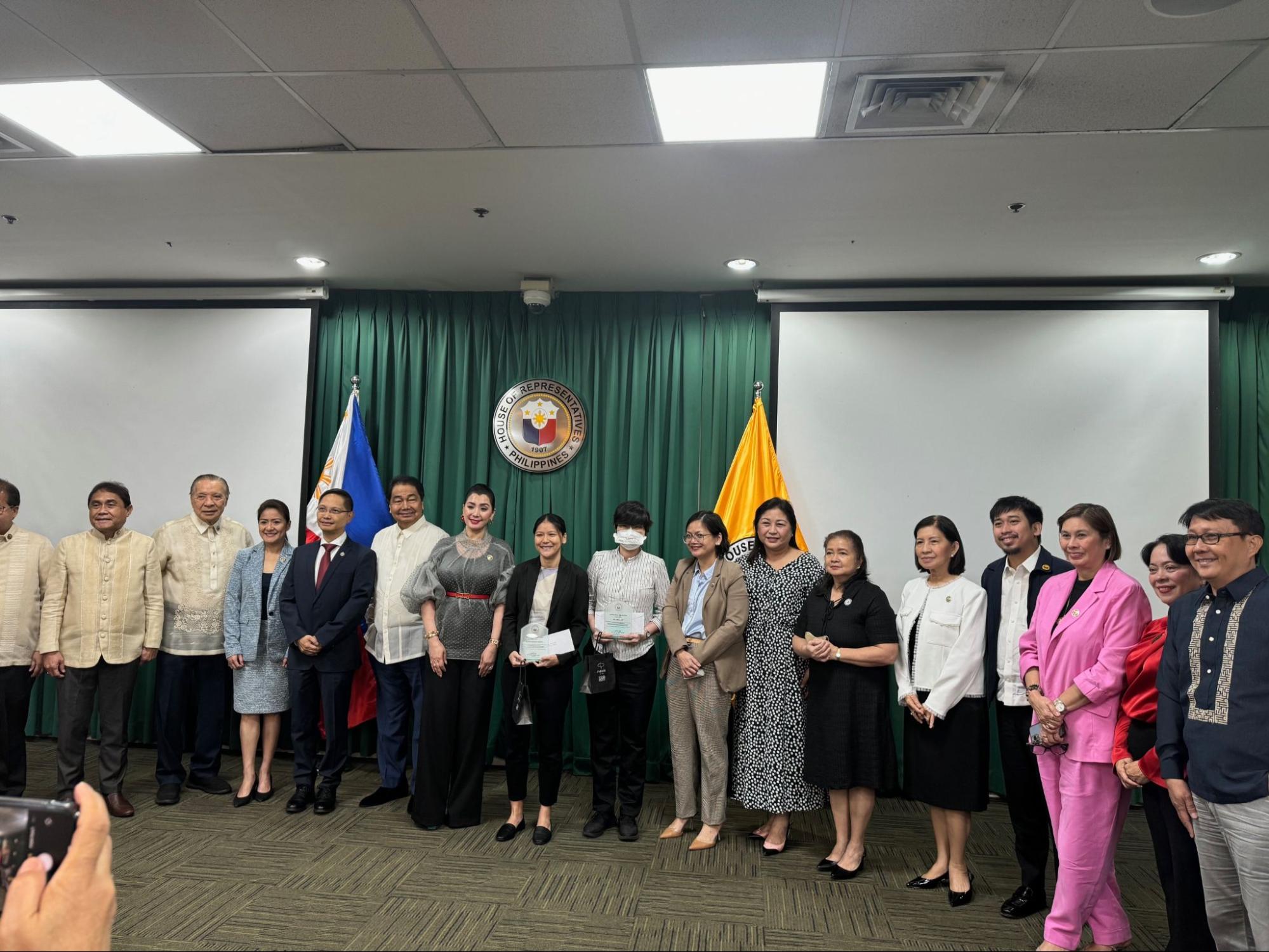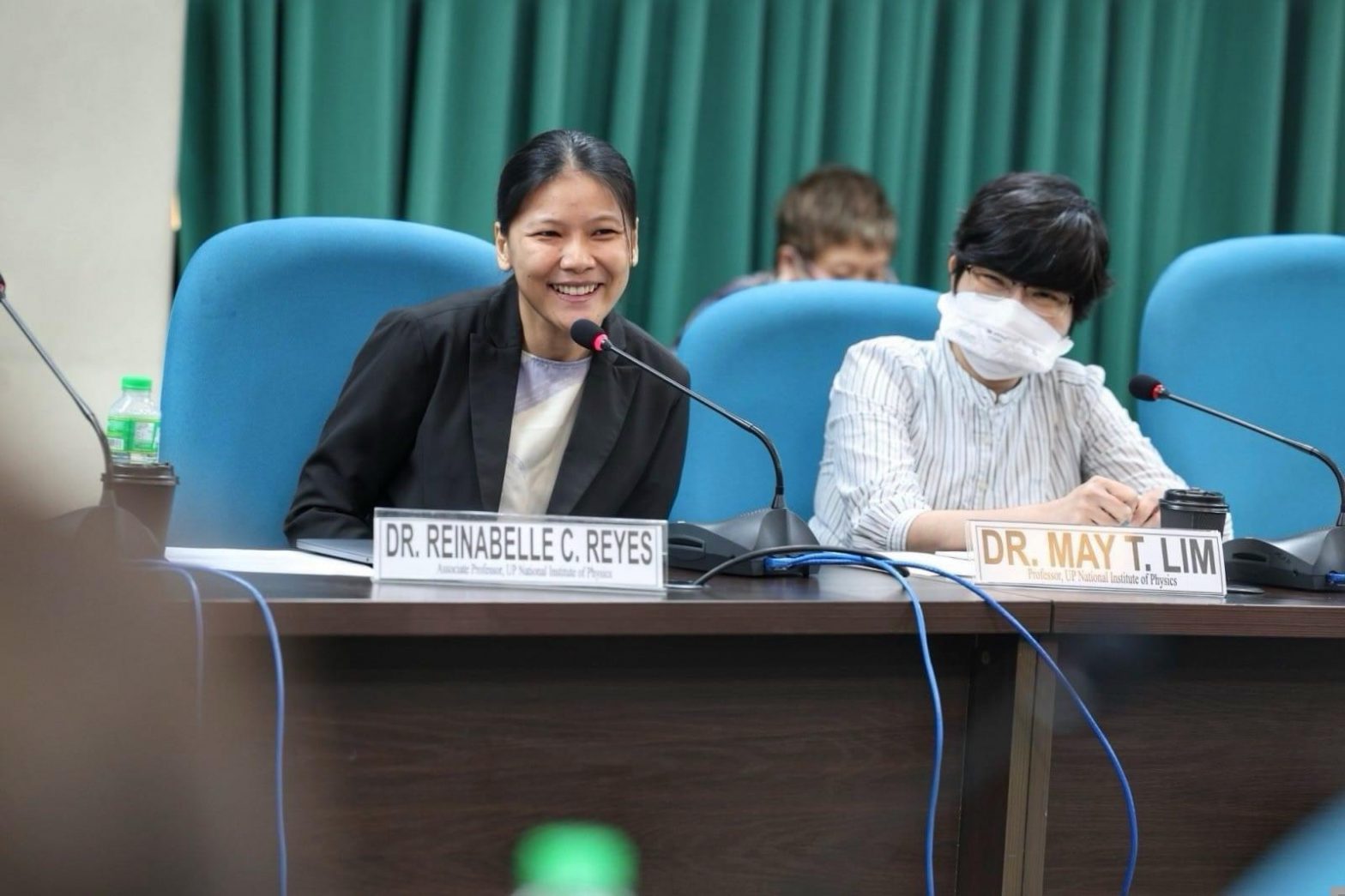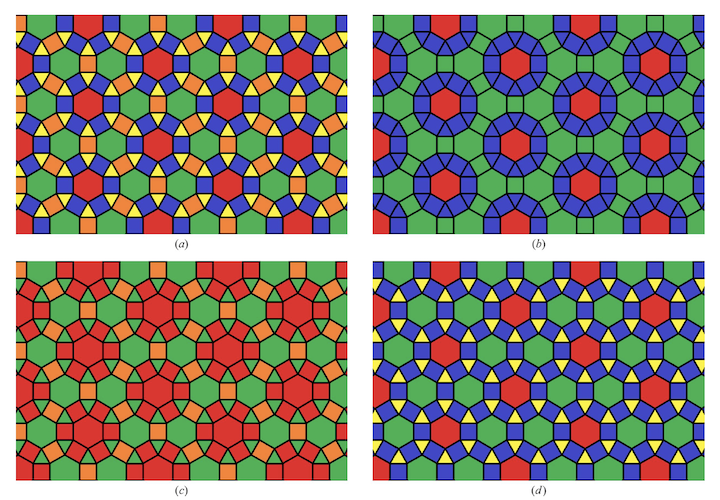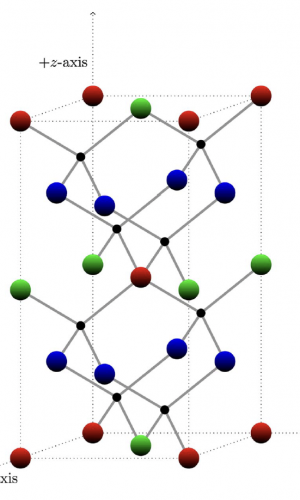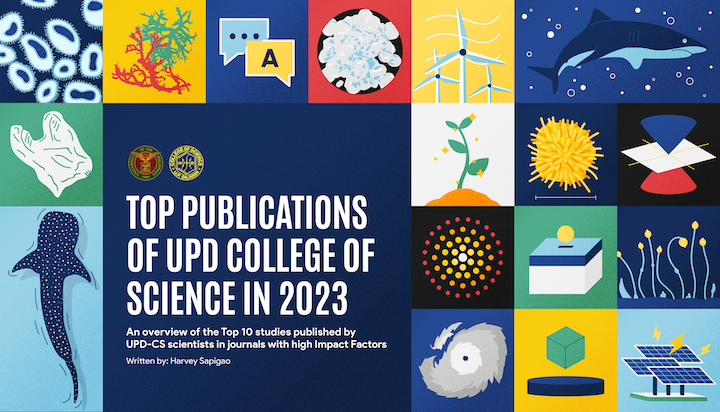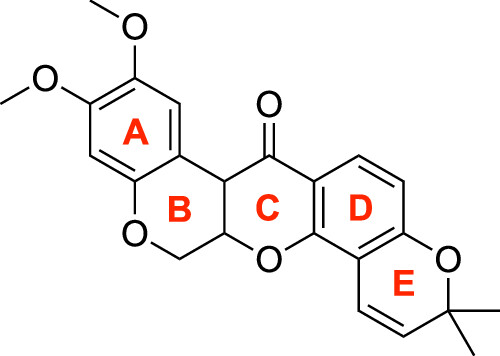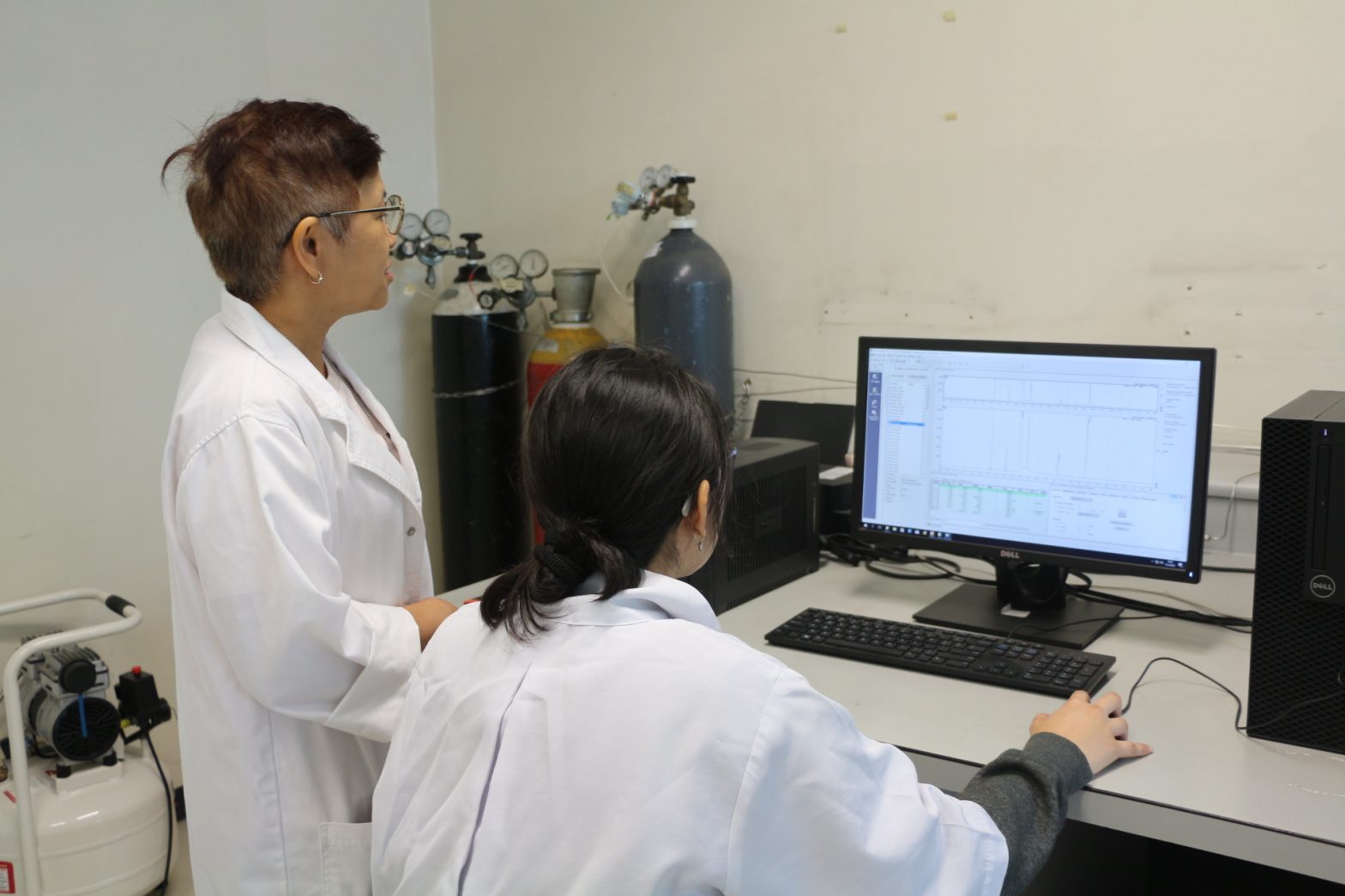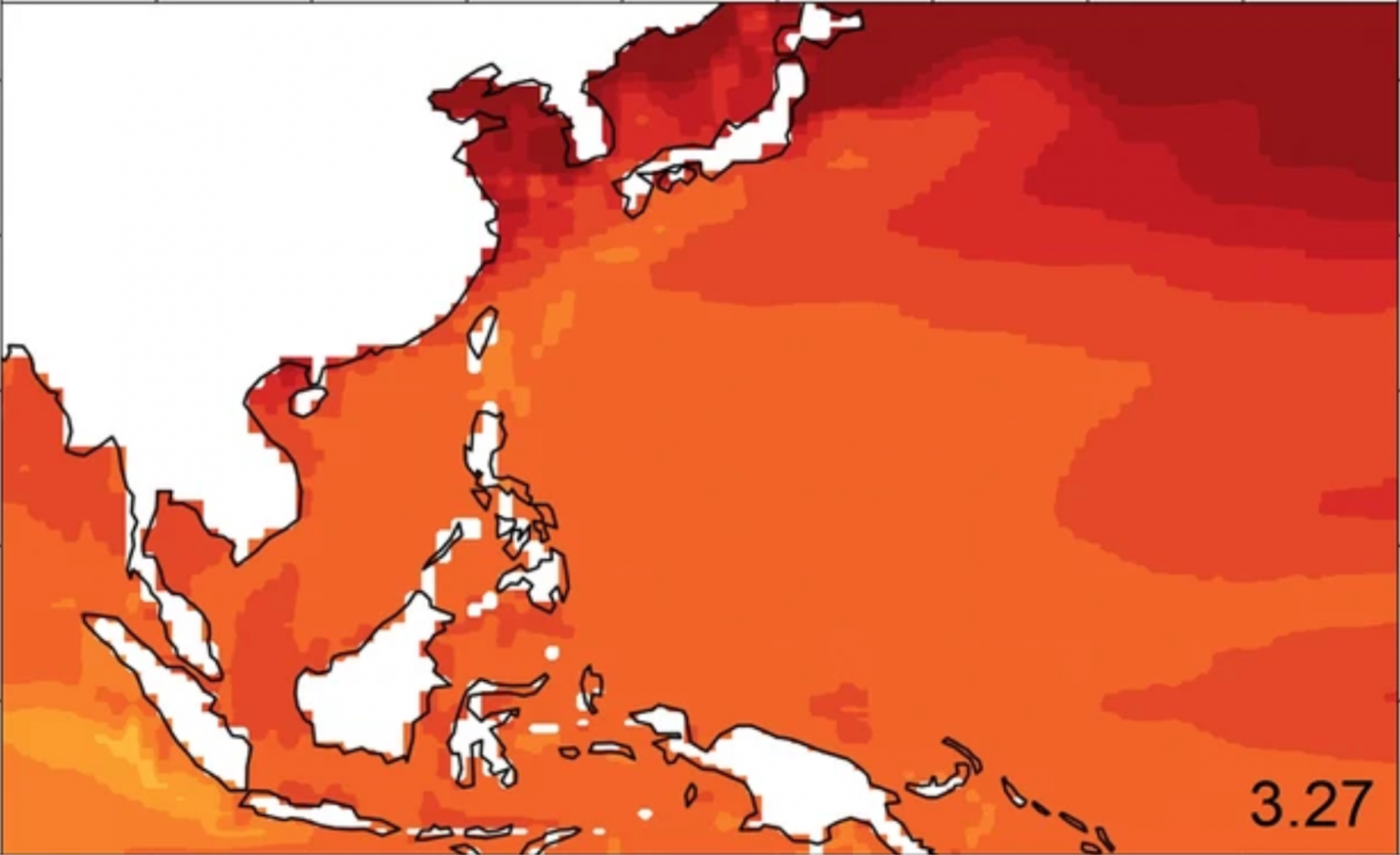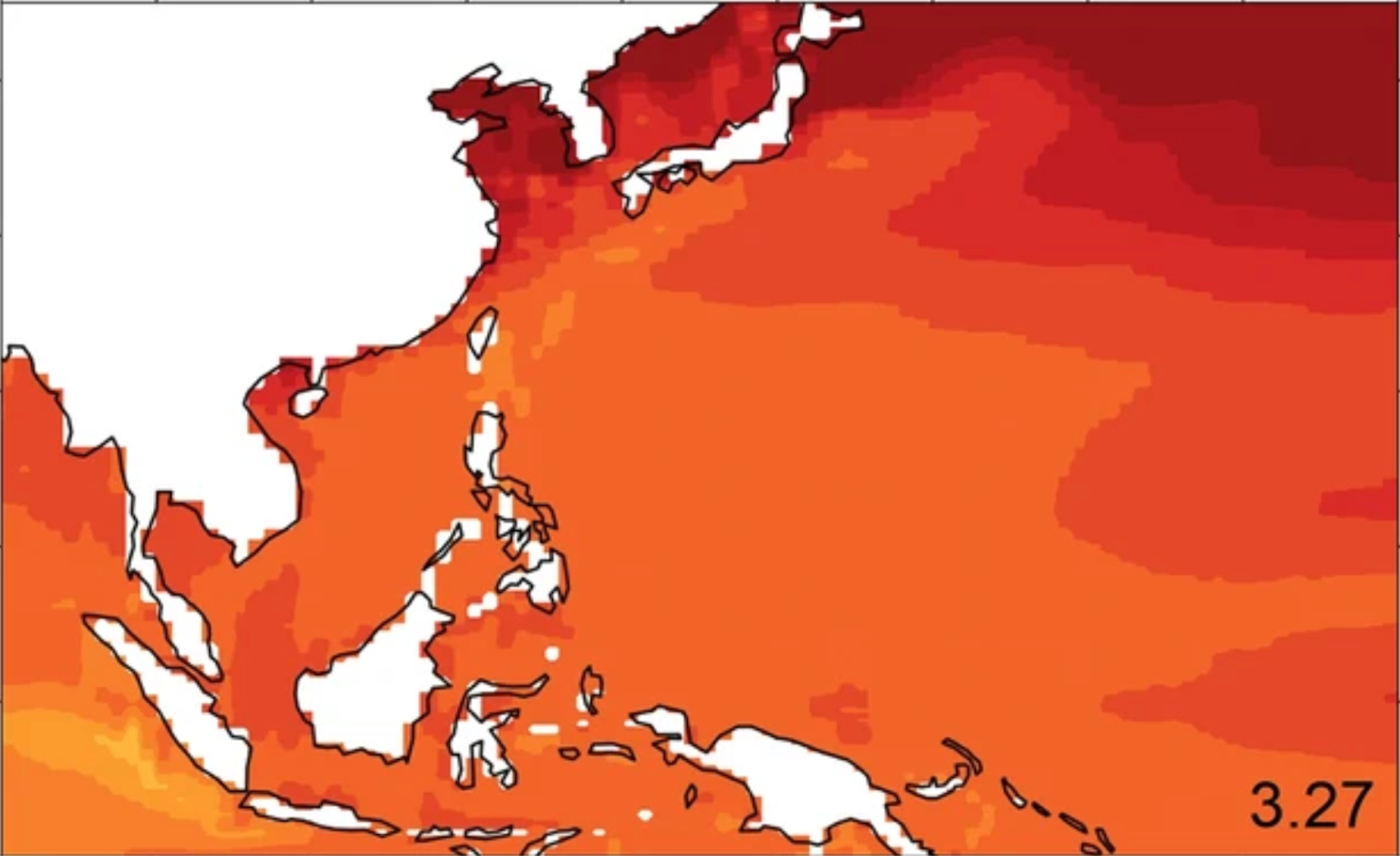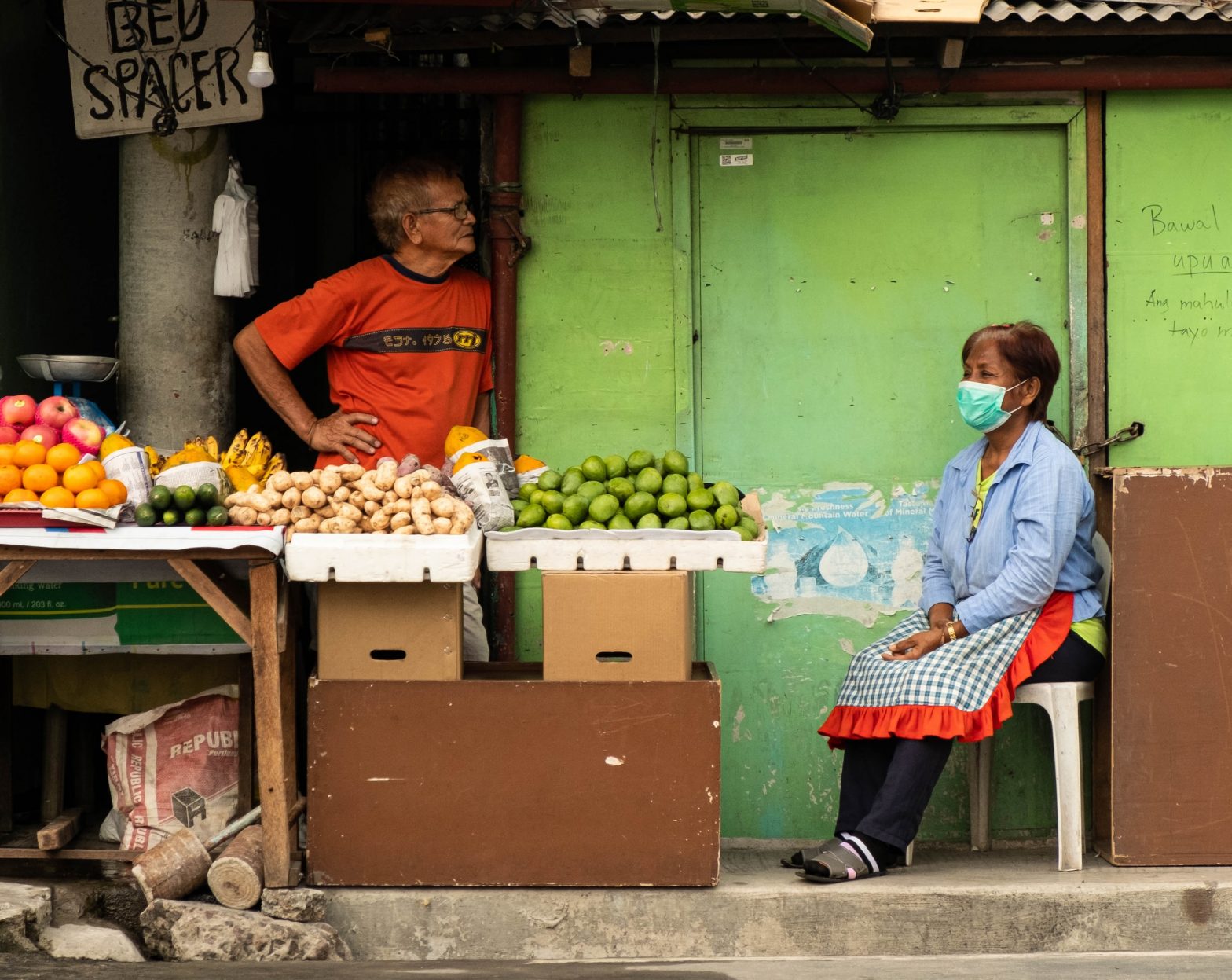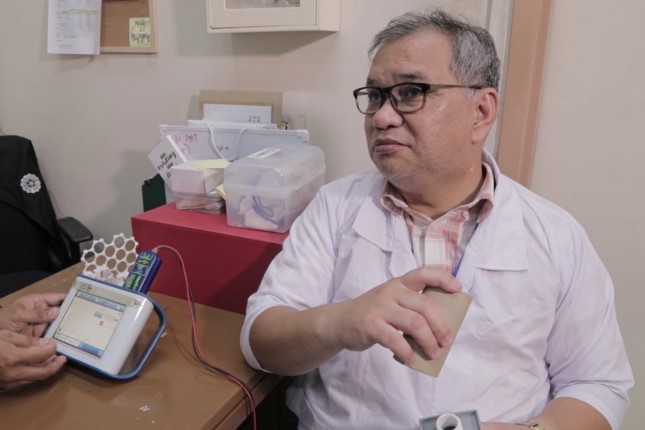In 2023, about 1 in 20 studies produced by the Philippines came from the UP Diliman College of Science (UPD-CS). With a total of 368 studies across all scientific disciplines, UPD-CS studies accounted for more than half of the total publications produced by UP Diliman. This number comes as no surprise since the College is home to 211 Ph.D faculty members. But beyond the numbers, UPD-CS has published groundbreaking research in many prestigious research journals.
Here are the Top 10 studies published by UPD-CS scientists in journals with high Impact Factors (IF)*:
1. Shedding Light on Mysterious Superconductors (IF: 41.2)
Superconductors allow electricity to pass through with no resistance. Previously, it was believed that when excessive electrons are removed from a mysterious type of superconductor called cuprate superconductor, known as “overdoping,” the material would behave in accordance with the Bardeen–Cooper–Schrieffer (BCS) theory. However, Dr. Miguel Sulangi of the National Institute of Physics and collaborators from the Netherlands, Japan, China, and the USA showed that this is not the case, challenging the long-held belief that BCS theory governs overdoped cuprate superconductors. Cuprate superconductors were discovered in 1986 but physicists have yet to uncover all its secrets.
Read the press release here: https://science.upd.edu.ph/upd-cs-nip-physicist-co-authors-groundbreaking-research-on-mysterious-superconductors/
Title: Puddle formation and persistent gaps across the non-mean-field breakdown of superconductivity in overdoped (Pb,Bi)2Sr2CuO6+δ
Journal: Nature Materials
DOI: https://doi.org/10.1038/s41563-023-01497-1
2. Applying Einstein’s Concepts of Relativity to Exotic Particles (IF: 16.6)
Einstein’s Theory of Relativity claims that two events can only influence one another if they are inside each other’s spacetime area called the light cone. Borrowing this concept, Dr. Gennevieve Macam of the National Institute of Physics worked with an international team of researchers to explain how two exotic particles called Weyl fermions interact. Their study is the first to describe Weyl fermions in terms of spacetime concepts, demonstrating how two physics disciplines – condensed matter physics and high-energy physics – are fundamentally connected.
Read the press release here: https://science.upd.edu.ph/beyond-einstein-pinay-physicist-investigates-exotic-subtonic-particles/
Title: Causal Structure Of Interacting Weyl Fermions In Condensed Matter Systems
Journal: Nature Communications
DOI: https://doi.org/10.1038/s41467-023-37931-w
3. History of Single-celled Predators (IF: 15.9)
Single-celled organisms, like the protists Acanthamoeba and Dictyostelium, use metals to kill bacterial prey. Exactly how these organisms evolved is the focus of the study by Dr. Windell Rivera and collaborators from China. They provided a timeline for the evolution of metal-poisoning protists, from the moment protists were created to the time they adapted to the environment and acquired the ability to use metals in killing their prey.
Title: A Brief History Of Metal Recruitment In Protozoan Predation
Journal: Trends in Microbiology
DOI: https://doi.org/10.1016/j.tim.2023.11.008
4. Identifying First Bacteria Colonizers on Plastics (IF: 13.6)
Many types of bacteria live on plastics left in the environment. But for diverse colonies to thrive, a group of bacteria, called primo-colonizers, must first prime the plastics to make them habitable for other types of bacteria. Justine Marey Bitalac, Norchel Corcia Gomez, and Dr. Deo Florence Onda of the Marine Science Institute, together with Dr. Nacita Lantican of UP Los Baños, identified these primo-colonizers and described how they change the structure of plastics. Their study helps elucidate how plastics degrade in the environment and opens possibilities on how to solve the growing plastic pollution problem.
Title: Attachment Of Potential Cultivable Primo-Colonizing Bacteria And Its Implications On The Fate Of Low-Density Polyethylene (LDPE) Plastics In The Marine Environment
Journal: Journal of Hazardous Materials
DOI: https://doi.org/10.1016/j.jhazmat.2023.131124
5. Simulating the Spread of Monkeypox (IF: 12.7)
Together with South Korean scientists, Drs. Victoria May Mendoza and Renier Mendoza of the Institute of Mathematics investigated the importance of self-reporting and contact tracing in controlling epidemics. They simulated how self-reporting and contact tracing affect the spread of monkeypox in non-endemic regions. They found out that an unreported primary case with delayed contact tracing can potentially increase the average number of infections by up to 40% compared to when the primary case is known and contact tracing is immediate.
Title: Estimation Of Monkeypox Spread In A Non-Endemic Country Considering Contact Tracing And Self-Reporting: A Stochastic Modeling Study
Journal: Journal of Medical Virology
DOI: https://doi.org/10.1002/jmv.28232
6. Classifying Seaweeds in the Philippines (IF: 11.5)
Seaweeds such as the milyon-milyon, tambalang, and kab-kab are abundant in the Philippines, making the country one of the leading seaweed farming industries in the world. Despite this, Philippine seaweeds are undocumented. Bea Crisostomo, Zae-Zae Aguinaldo, Lourie Ann Hinaloc, and Dr. Michael Roleda of the Marine Science Institute established the taxonomy and distribution of different seaweeds in the Philippines using knowledge from local farmers. Their study provides a database of seaweeds that can be used for conservation efforts.
Title: The Diversity Of Eucheumatoid Seaweed Cultivars In The Philippines
Journal: Reviews in Fisheries Science & Aquaculture
DOI: https://doi.org/10.1080/23308249.2022.2060038
7. Tropical Cyclones and their Threat to Food Security, Health, and Biodiversity (IF: 11.1)
Damages brought by tropical cyclones produce a cascading effect on food security, health, and biodiversity. In a perspective paper by Dr. Rene Abesamis of the Marine Science Institute and collaborators from Chile, Japan, Switzerland, and Norway, they explained that tropical cyclones can damage roads, agricultural infrastructure, and grazing lands, which affects food production. The destruction of tropical ecosystems also affects food security, which in turn produces health problems such as micronutrient deficiency. The authors urge researchers to develop tools that can aid in policy-making and governments to coordinate closely in a collaborative effort to curb the effects of tropical cyclones.
Title: Impacts Of Tropical Cyclones On Food Security, Health And Biodiversity
Journal: Bulletin of the World Health Organization
DOI: http://dx.doi.org/10.2471/BLT.22.288838
8. Tracking Human Settlers in the Holocene Period Using Genetics (IF: 11.1)
By analyzing almost two decades’ worth of genomic data, Jae Joseph Russell Rodriguez of the Natural Sciences Research Institute and international researchers traced how humans migrated around the world and how they facilitated the spread of language and agriculture about ten thousand years ago. In Southeast Asia, their study suggests that human settlers in the region, referred to as Austronesians, first migrated from China to Taiwan, then moved southward to the Philippines, Indonesia, and Papua New Guinea. Using sophisticated boating technology, Austronesians were then able to reach islands as far as Madagascar and Hawaii.
Title: Genomic Perspectives On Human Dispersals During The Holocene
Journal: Proceedings of the National Academy of Sciences
DOI: https://doi.org/10.1073/pnas.2209475119
9. Water-purifying Nanoparticles (IF: 9.9)
As water pollution becomes an ever-more pressing issue, we are in dire need of technologies that can purify water. Dr. Michelle Regulacio of the Institute of Chemistry collaborated with scientists from China to create a nanocomposite that can get rid of water contaminants with the help of light. The nanocomposites, made up of zinc oxide and carbon, can easily cling to organic dyes and bacteria and, using energy from light, decompose or kill them. The nanocomposites are cheap and simple to manufacture, offering a cost-effective wastewater treatment system.
Title: Hydrophilic ZnO/C Nanocomposites With Superior Adsorption, Photocatalytic, And Photo-Enhanced Antibacterial Properties For Synergistic Water Purification
Journal: Journal of Colloid and Interface Science
DOI: https://doi.org/10.1016/j.jcis.2023.06.019
10. Marine Pollution and Its Effects on Southeast Asian Biodiversity (IF: 9.8)
Southeast Asia is one of the most biodiverse regions in the world while also contributing significantly to marine pollution. Yet the region is underrepresented in studies that focus on the effects of marine pollution on biodiversity. In their review paper, Dr. Lemnuel Aragones of the Institute of Environmental Science and Meteorology and partners in Southeast Asia investigated why this is the case. They found out that these sorts of studies are complicated by language barriers, sociocultural limitations, and difficulties in examining species.
Title: Interactions Between Marine Megafauna And Plastic Pollution In Southeast Asia
Journal: Science of The Total Environment
DOI: https://doi.org/10.1016/j.scitotenv.2023.162502
In addition, here are the top studies published by UPD-CS-affiliated authors in high IF journals:
Using Algorithms to Model Social Behaviors (IF: 11.25)
Algorithms such as machine learning (ML) are better at classifying social responses than conventional statistical tools. That’s what Dr. Armando Apan of the Institute of Environmental Science and Meteorology (IESM) and collaborators from Nepal concluded in their research that looked upon the perspective of Nepalese people on energy consumption. ML models of public perceptions can aid in policy-making, planning, and implementation.
Title: Application Of Machine Learning To Assess People’s Perception Of Household Energy In The Developing World: A Case Of Nepal
Journal: Energy and AI
DOI: https://doi.org/10.1016/j.egyai.2023.100303
Examining Ecosystem Services in the Himalayas (IF: 11.1)
Services from nature like water supply, crop production, and habitat quality are called ecosystem services. Ecosystem services have unique relationships with one another. For example, when farmers convert forests into farms to increase crop production, the habitat quality will decrease. These unique relationships are the research focus of Dr. Armando Apan of the IESM and his partners in Nepal. They looked into how each ecosystem service changes with respect to one another and examined how this affects the ways of living in the Himalayas.
Title: Understanding Production Possibility Frontiers And Utility Values Of Ecosystem Services In The Himalayas: An Analysis Of The Supply-Demand Divide
Journal: Journal of Cleaner Production
DOI: https://doi.org/10.1016/j.jclepro.2023.138725
Why Renewable Energy Sources are Failing in Nepal (IF: 9)
The threat of climate change urges countries to transition to renewable energy sources, but developing countries such as Nepal struggle to do so. Dr. Armando Apan of the IESM and collaborators from Nepal examined the reasons and learned that solar and wind technologies shut down because of poor planning and fund discontinuation. Dr. Apan and collaborators emphasized the need to tackle the issue using “bottom-up” approaches that consider local contexts rather than “top-down” approaches that only look at the issue as mere technological transfers.
Title: Rationalizing donations and subsidies: Energy ecosystem development for sustainable renewable energy transition in Nepal
Journal: Energy Policy
DOI: https://doi.org/10.1016/j.enpol.2023.113570
* The metric Impact Factor (IF) measures the average number of times research papers are cited. For example, a journal with an IF of 9 means that, on average, research papers published in that journal are cited 9 times.
